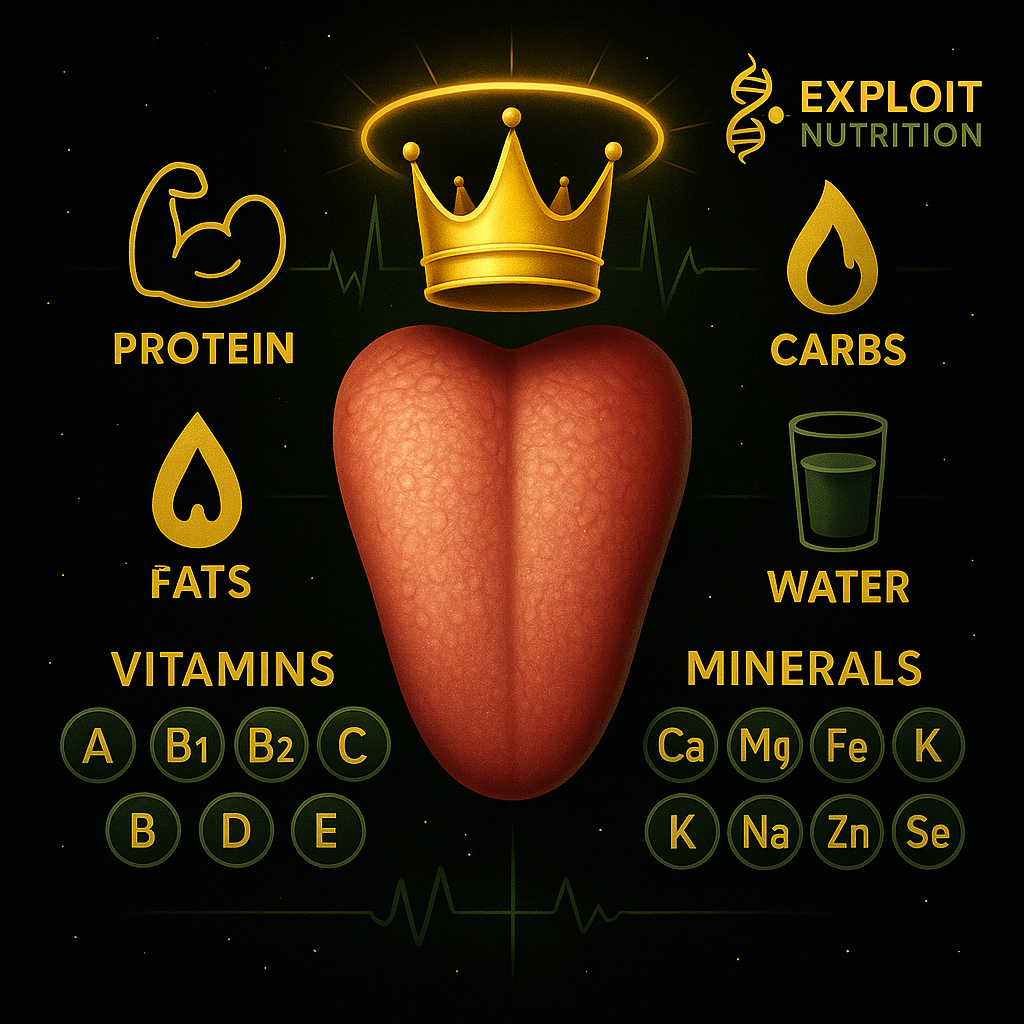The Start
Image by Teleportstrength.com
Nutrition begins at the very first interaction between food and the senses, with taste playing a crucial role in shaping dietary choices and overall health. Taste acts as both a biological signal and a behavioral guide, encouraging the consumption of essential nutrients while discouraging potentially harmful substances.
From an evolutionary perspective, taste emerged as a survival mechanism. Sweetness signals energy-rich carbohydrates, bitterness often warns against toxins, and sourness can indicate spoilage or unripe foods. This intrinsic system encourages the intake of energy and essential vitamins and minerals, reinforcing healthy eating patterns.
However, taste can also present challenges. Modern diets high in refined sugars, salts, and unhealthy fats capitalize on our innate preferences, sometimes leading to overconsumption and adverse health effects such as obesity, cardiovascular disease, and metabolic disorders. The encouraging benefit of taste — promoting nutrient intake — can become a discouraging factor if it drives a reliance on nutrient-poor, calorie-dense foods.
Understanding the dual role of taste allows for strategic nutrition planning. By training the palate to appreciate natural, wholesome flavors and reducing dependency on artificial enhancements, individuals can encourage beneficial eating habits. Teleport Strength emphasizes this balanced approach to nutrition, integrating taste awareness into strength and conditioning programs to support both physical and mental well-being.
Taste is the most influential sense.
Choosing healthier food options that satisfy your taste buds begins with understanding your personal flavor preferences and gradually incorporating nutrient-dense ingredients that complement those tastes. Start by identifying the flavors you enjoy most—whether savory, sweet, spicy, or sour—and explore wholesome alternatives within those categories. For example, if you crave sweetness, try naturally sweet fruits or lightly sweetened yogurt instead of processed desserts. If you prefer savory flavors, experiment with herbs, spices, and healthy fats like olive oil or avocado to enhance meals without relying on excessive salt or unhealthy additives.
Next, focus on whole foods such as fresh vegetables, lean proteins, whole grains, and healthy fats. When trying new recipes, modify them by swapping out less nutritious ingredients with healthier substitutions that still deliver on flavor. Cooking at home allows you to control seasonings and portions, making it easier to align meals with both your taste preferences and nutritional goals.
Lastly, take a gradual approach—replace one ingredient or meal at a time rather than overhauling your entire diet at once. This gives your palate time to adjust and reduces the chance of feeling deprived. Over time, your taste buds will adapt, making it easier and more enjoyable to choose healthier foods that truly satisfy.


